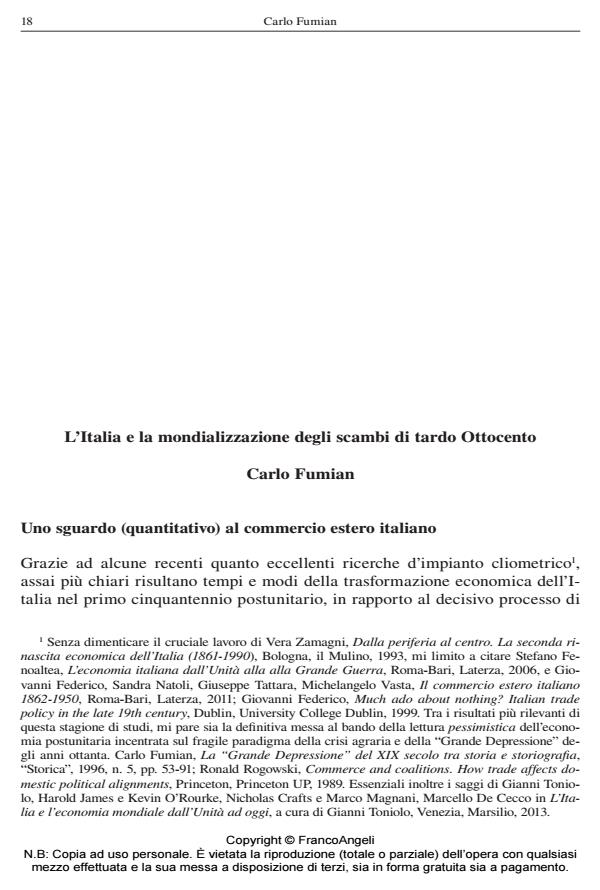Italy and the Globalisation of Trade Exchanges in the Late 19th Century
Journal title ITALIA CONTEMPORANEA
Author/s Carlo Fumian
Publishing Year 2016 Issue 2016/282
Language Italian Pages 27 P. 18-44 File size 2592 KB
DOI 10.3280/IC2016-282002
DOI is like a bar code for intellectual property: to have more infomation
click here
Below, you can see the article first page
If you want to buy this article in PDF format, you can do it, following the instructions to buy download credits

FrancoAngeli is member of Publishers International Linking Association, Inc (PILA), a not-for-profit association which run the CrossRef service enabling links to and from online scholarly content.
Foreign trade is a measure of the internationalization in Italy’s post-unification economy as well as a fascinating historical issue in itself. However, we have little knowledge about how long-distance exchanges were carried out, and who were the big and small foreign traders, ship owners, bankers and entrepreneurs at the center of those exchanges. Nor do we have any extensive knowledge about whether Italy was properly equipped to deal with the organizational, storing, and marketing innovations established at an international level to face the unprecedented stream of commodities, some of which were never exchanged over long distance before this time. Relying on so far ignored primary sources it is possible to document the laborious activity of small and big Italian traders in the international trade despite the delays by the Italian authorities in setting up the necessary infrastructures. Their competitive advantage - as well as their permanent weakness - seems to be the swarm of small actors that lacked an institutional framework, i.e. an effective collaboration of the recently unified State. Perhaps, a long-lasting aspect of the Italian history?
Keywords: Globalization, Trade, Italy, Markets, Entrepreneurs, Business history, Board of trade
- A History of Wine in Europe, 19th to 20th Centuries, Volume I Luca Mocarelli, Manuel Vaquero Piñeiro, pp.227 (ISBN:978-3-030-27771-0)
- The End of the Montello Woodland: Institutional Change, Economic Transformation and Rural Conflict in Late Nineteenth-Century Italy Giacomo Bonan, in Historia Agraria Revista de agricultura e historia rural /2025
DOI: 10.26882/histagrar.097e06g
Carlo Fumian, L’Italia e la mondializzazione degli scambi di tardo Ottocento in "ITALIA CONTEMPORANEA" 282/2016, pp 18-44, DOI: 10.3280/IC2016-282002